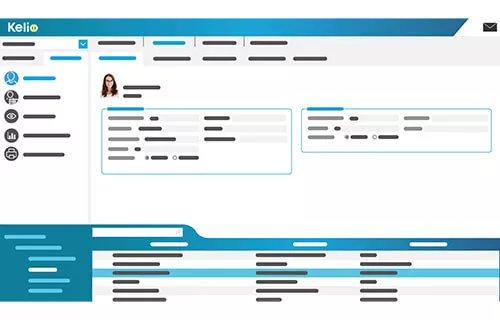Activity monitoring within organisations, which consists of monitoring and analysing the number of hours worked by employees as well as the type of work, is a key issue related to keeping track of productivity or cost pricing. How can activity monitoring be carried out? What tools are available to companies to support it?
What is an activity tracker?
Within an organisation, activity tracking consists of recording the actual hours worked by employees, as well as the details of the tasks carried out during these working hours.
Activity tracking can also be described as a practice of rewording all the activities that have been undertaken by employees in order to track their activities.
Several indicators may be set up in order to have an effective company-wide structure in place. These indicators may include: the number of hours worked, the tasks performed, and the names of the clients for whom a project has been delivered. Activity monitoring can be carried out individually, in teams, or both.
During your employee’s annual appraisal interview, having this activity tracking data to hand allows you to discuss work carried out based on data-driven evidence. This makes accurate tracking an invaluable HR tool and enables HR mangers to be better equipped with appropriate areas for development.
When setting up activity tracking for your company and once objectives have been determined, actions need to be implemented throughout the company, informing staff of the changes to tracking. Some reluctance is inevitable due to some employees seeing activity monitoring as a way to control them under the disguise of ensuring better performance of the company. However, it can be discussed with them that they will benefit as well as actual hours worked will be accounted for and therefore pay will be more accurate.
Setting up activity tracking: how to go about it?
It is important to keep in mind that in order to be effective and accepted by all, the activity monitoring put in place must be:
- Simple
- Comprehensive, in order to gather as much information as possible for continuous improvement
- Updated regularly
In most companies, monitoring the hours worked on specific activities is carried out via "homemade" forms or Excel spreadsheets, which are then validated by the line manager before being recorded. This can be timely and incur many mistakes.
Accurate tracking allows data to be collected that can be broken down and measured as follows:
- Human Resources data: time spent on the project, overall working time, rest days
- Quantitative data: quantities produced, working time per day per activity
- Financial data: cost per employee, cost per activity
The analysis of this data will allow the company to highlight areas for improvement, while enabling invoicing for customers or drawing up employee payslips (including overtime worked). It is also possible to automate activity monitoring with software such as ‘time and attendance management’.
Examples of data that can be extracted include:
- Customised configuration according to the operation of the company
- Detailed timesheets (time slots or tasks, projects, or clients)
- Validation notifications for managers
- Filtered timetable dashboards and budget data (employees, projects, clients)
- Creation of customised reports
- Exported data

Activity monitoring: the objective and expected results
Importantly, one of the main challenges with activity tracking is to improve the team performance. However, it is also a great way to manage projects; tracking them and keeping informed about progress.
The use of dedicated activity monitoring software has multiple advantages in terms of management, human resources, accounting and finance. It makes it possible to:
Reduce the administrative burden
Employees enter their own time either on their mobile or PC, which is simple and easy to use. The amount of individual overtime and the balance of hours can be easily accessed rather than taking time of the HR department every month with requests.
In addition, managers can directly consult the information and validate it. The information can be exported for customer invoicing and payroll preparation by the accounting and human resources departments. This greatly reduces the risk of forgetting information or entering data twice!
These applications can be accessed on computers, tablets or smartphones and therefore available to the employee anywhere and accessed in real time.
Cost and time control
Each manager can view the tasks performed in real time and how much money has been spent and charged to each activity. This can be used to identify problems and to control and refine the project management by redistributing the resources.
Track performance
Data analytics is an indispensable tool for financial services to calculate costs and margins, and measure profitability. Equipped with this real-time information, the company will be able to set or adjust targets or rates appropriately.
Kelio’s workforce management solution, offers simple software for managing activities and working time adapted to the needs of your company.



